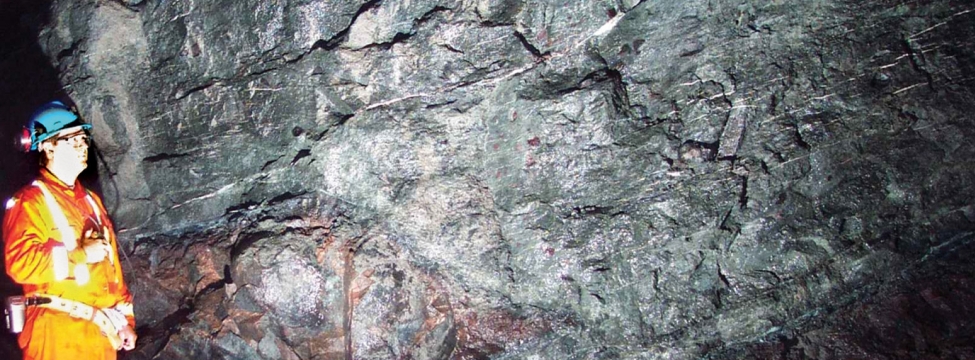To serve you better, our new website displays information specific to your location.
Please visit the site and bookmark it for future use.
Structural Controls on Kimberlite Geometry and Emplacement
SRK was enlisted by De Beers (Canada) to conduct a structural investigation of its Snap Lake Diamond Project, located in the Canadian Arctic, 220 kilometres northeast of Yellowknife. The ore body at Snap Lake is a diamondiferous kimberlite dyke, which dips gently towards the east, under Snap Lake.
The broadly tabular geometry of the ore deposit of the Snap Lake dyke represents a marked departure from the pipe-like diamond deposits that De Beers is accustomed to mine elsewhere. However, like other dykes, the Snap Lake kimberlite dyke is not perfectly tabular, but in fact is segmented across a range of scales (centimetres-decametres). Certain scales of segmentation could potentially be a challenge for mining; dilution due to drift-scale changes in elevation between the adjacent dyke segments represents the most likely problem. Additionally, the dyke has been emplaced into Archaean granitic host-rocks, which are cut by a regional scale fault system, the Snap-Crackle fault.
In partnership with De Beers Snap Lake geologists and technical staff of their Mineral Resource Management group, SRK is refining the structural interpretation of the Snap Lake deposit by mapping the structures in the underground development and ore horizons. The principal objectives of the investigation are to augment the current understanding of the geometry of the kimberlite dyke using quantitative structural analysis and to provide a rationale for the formation of these structures in an emplacement model. In time, this information will be used in mine planning and day-to-day interpretation of faces.
SRK is well-equipped to assist with this analysis due to our combined expertise in analysing faults and fluid-driven fractures (dykes), in kimberlite geology and in diamond mining. To date, we have formulated a dyke growth model consistent with the geometry; identified the scaling relationships and preferred orientations of dyke segment linkage; and established the relation of areas of complex dyke geometry to different fault sets. These findings are helping to finalise mine development plans and to streamline day-to-day geological data collection and interpretation.
Chris Bonson: cbonson@srk.com
Jarek Jakubec: jjakubec@srk.com
|
You can download a PDF of the entire |
PDF A4
|
PDF Letter
|
|
|
|
Our newsletters focus on specific areas of interest to earth resource professionals and clients. Each is available as an Adobe Acrobat PDF file. If you don't already have Adobe's PDF reader, you can download it free.


